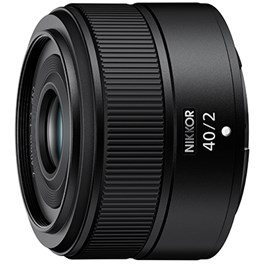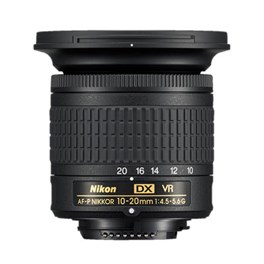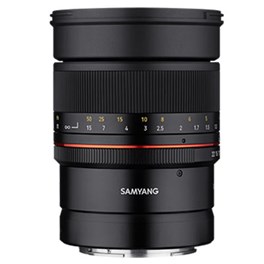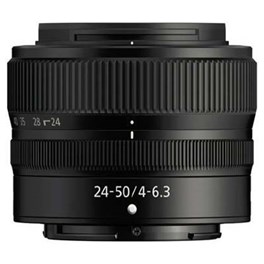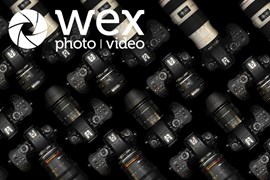
We’ve compiled ten affordable lenses for Nikon users to help out any photographers and videographers who are feeling the pinch. As the cost of living continues to squeeze household budgets nationwide, many of us are not able to spend as much as we’d like on our hobbies. So, we’ve put together this list to remind Nikon shooters that there is plenty of affordable glass out there – you just have to look for it.
Of course, these days a “Nikon user” might mean either someone shooting with Z-mount mirrorless cameras, or F-mount DSLRs – or even both. We’ve included lenses for both systems in this guide to give everyone plenty of options. Mirrorless shooters, remember that it’s possible to mount F-mount lenses to Z-mount cameras via the FTZ adapter.
Another thing to remember is that both Nikon DSLRs and Nikon mirrorless cameras can have either full-frame or APS-C sensors, which Nikon refers to as “FX” and “DX” format respectively. Most Nikon lenses will work with both sensor sizes – but some will only work with DX-format cameras (these are marked with a “DX” throughout). Also, if you’re using a DX-format camera, the smaller sensor size means you need to apply a 1.5x crop factor to the focal length. So for instance, if you mount a 40mm lens on a DX-format camera, it will behave effectively like a 60mm lens. If you’re unsure which sensor format your camera has, a quick google will sort you out.
Now let’s get to our top ten affordable Nikon lenses…
Quick Navigation
10 Affordable Nikon Lenses
Nikon 50mm f1.8 D AF Lens
A supremely lightweight, compact and fast Nikon lens that offers the more economical f1.8 aperture (compared to the 50mm f1.4 D), yet it still retains the great advantages of the D distance technology. It is ideal for travel, portrait, scenery or full-length portraits. It weighs just 155g (0.34 lb), making it great for travel while still offering excellent low light gathering properties. Stops down to f22 for wonderful control over the depth of field. Accepts 52mm filters and the Nikon HR-2 lens hood.
£159.00 View
Pros:
- Great price
- Lightweight and compact
- Versatile focal length
Cons:
- Manual focus only with older DSLRs
In any conversation about affordable lenses, someone is always going to bring up the good old nifty fifty. This term refers to the kind of affordable, wide-aperture 50mm lens that tends to be available for most systems – and Nikon’s F-mount DSLRs are no exception. The Nikon 50mm f1.8 D AF is an older lens, and fairly simple, meaning you don’t get fancy new features like optical stabilisation – but what you do get is a sharp, lightweight and fast lens that delivers excellent images for very little outlay.
There’s a reason beginners often get recommended nifty fifties, and it’s not just the cost. The standard focal length provides a naturalistic perspective that’s intuitive to shoot with because it’s roughly the same field of view as a human eye. Also, if you’re using a more affordable APS-C DSLR, then it works out to an equivalent of 75mm, which means you’ve got yourself a cheap-as-chips portrait lens. Having f1.8 will give you significantly more latitude in low light than you’ll get from any kit zoom, too. Plus, learning to use a prime, and to move your feet rather than your zoom ring when you need to get closer to a subject, is a time-honoured way of improving your composition skills.
Lensbaby Spark 2.0 Lens for Nikon F
The Lensbaby Spark 2.0 Lens builds on the original 2004's Lensbaby and effectively combines the original's unique process of focusing and tilting with an internally adjustable 12 blade aperture and compatibility with any of the 15 Optic Swap optics introduced by Lensbaby since 2008. It is also the first flexible Lensbaby lens body that is compatible with mirrorless system cameras. Add a little bit more mystery and magic into your photographs and movies with this flexible body lens and its unique squeeze to focus interface. Anyone can use this lens, from beginners to professionals, and experience the magic that the Lensbaby Spark 2.0 brings to any production.
£199.00 View
Pros:
- Creates stylish, dreamlike images
- Tilt-shift mechanism is enjoyable to use
- Filter thread allows for even more creative options
Cons:
- Highly stylised effect is quite situational (you won’t want it on all the time)
The Lensbaby Spark 2.0 is a wonderfully affordable way to do something a little different with your Nikon DSLR. Rather than worrying about tack-sharpness, the Lensbaby embraces optical imperfection and encourages users to push their creativity, resulting in distinctive and stylish images. It works via a tilt-shift mechanism that allows you to physically manipulate the front element of the lens to create a ‘sweet spot’ of sharp focus that’s surrounded by a stylised blurred background. This is great for creating dreamlike portraits, but also has many other uses – try it in still-life or even landscape photography and see what kind of results you get. The whole point is experimentation!
Also, the Lensbaby Spark 2.0 accepts filters via its 46mm filter thread, so you can push the boat out even further by adding more in-camera effects. In fact, Lensbaby makes its own 46mm filter kit that lets you experiment with different focusing distances.
Nikon Z 40mm f2 Lens
Adding to Nikon’s growing Z-mount lens lineup is the Z 40mm f2 lens. This is an impressively compact and lightweight prime lens that offers a natural angle of view that’s perfect for engaging portraiture. With a range of intuitive and useful features, this lens can be used as an all-day lens that caters to countless photographic and video applications. It’s sharp, fast, quiet and set to impress.
£259.00 View
Pros:
- Snappy and powerful focusing system
- Lovely, crisp image quality
- Naturalistic perspective on full-frame and APS-C
Cons:
- Not weather-sealed
In case you assumed all Z-mount lenses were going to be expensive, here’s a lovely affordable prime for Nikon’s mirrorless system. The Nikon Z 40mm f2 sits in a focal-length sweet spot that’s great for street photography, and boasts a lightweight body that’s optimal for travel (just be careful in the rain – it’s not weather-sealed). Its stepping motor autofocus is nice and fast, and f/2 is wide enough to throw out the background when you need to. It’s a budget-friendly lens for doing a bit of everything – great for exploring a city on holiday when you don’t want to be swapping lenses too often.
It can be mounted on Nikon’s DX-format Z-mount cameras like the Z30 and Z fc, and there it will provide an equivalent focal length of 60mm – still nice and natural-looking. The focusing action of the lens is ultra-quiet, too, so it’s a great one for video.
Nikon Z 28mm f2.8 Lens
As the smallest and lightest full-frame Z series prime on the market, the Nikon Z 28mm f2.8 is suited to a wide range of photographic disciplines to include landscape, street, and portrait photography. The fast, silent AF system and silent control ring further support the cinema-quality 28mm focal length. In short, this lens is a lightweight, powerful, and affordable prime fit for all.
£259.00 View
Pros:
- One of the lightest Z-mount primes
- Great for close-ups with 19cm focal distance
- Video-friendly focal length
Cons:
- No AF/MF switch
- No optical Vibration Reduction
Sticking with Z-mount for the moment, the Nikon Z 28mm f2.8 is one of the lightest primes you can buy for the system, and offers a versatile 28mm focal length (bumped up to 42mm if used with a DX-format camera). It can focus as close as 19cm from the subject, meaning you can make the most of that wider field of view and really fill the frame. Optics are generally pretty good, rendering crisp colours and delightful sharpness. It focuses quickly and silently too, which will be good news for the videographers who may have already been eyeing it up for its video-friendly 28mm focal length.
There aren’t many physical control buttons on the lens, and some may find themselves wishing for an AF/MF switch; however, Nikon did manage to find room for a control ring. It’s worth being aware that there’s no optical Vibration Reduction stabilisation on this lens.
Nikon 40mm f2.8 G AF-S DX Micro Lens
The AF-S DX Micro Nikkor 40mm f2.8G is a true 1:1 macro lens for DX format DSLRs like the D90, D5100 and D7000. Incorporating the NIKKOR Silent Wave Motor (SWM) for quiet accurate focus operation, a large f2.8 aperture and a 16.3cm close focusing, this lens is ideal for shooting both intimate close-up details or general portraiture with flattering out of focus elements. When mounted on a DX-format SLR, the picture angle is equivalent to a focal length of about 60mm in 35mm format.
£299.00 View
Pros:
- Excellent close-focusing distance
- “True” macro 1:1 magnification ratio
- Allows quick-switching between manual and autofocus
Cons:
- APS-C only
- Highly specialised for macro
It’s remarkable how cheap this DSLR lens is considering how well optimised it has been for close-up shooters. The close focusing distance is hugely impressive, with a minimum focusing distance of just 16.3cm (at that kind of range, you have to be careful not to get in your own light!). The lens offers a true macro magnification ratio of 1:1, meaning subjects are rendered life-size on the sensor, and it has a handy manual-priority autofocus mode that makes it easy to switch from auto to manual mode for fine-tune adjustments to focusing.
This is a DX-format lens only, meaning it’s built for APS-C DSLRs (on which it delivers an equivalent focal length of 60mm). While it works well enough as a standard prime and can certainly handle general-purpose photography, if you have no interest in close-ups then there are probably other lenses that will offer more value for money. For those who want to shoot the smallest details on a budget, however, this lens is practically unparalleled.
Nikon 10-20mm f4.5-5.6 G AF-P DX VR Nikkor Lens
The Nikon 10-20mm f4.5-5.6 G AF-P DX VR Nikkor Lens expands your creative options with an ultra-wide-angle zoom lens that's built to travel. Expand space, exaggerate perspectives, and create striking compositions. No more stepping back to fit in sweeping views, and the minimum focus distance of 0.22 m lets you capture close-ups in which your subject fills the frame.
£309.00 View
Pros:
- Great for expansive views
- Vibration Reduction stabilisation
- Near-silent autofocus
Cons:
- Relatively narrow aperture
- Mount is plastic, not metal
This travel-friendly lens is designed for Nikon F-mount DSLRs with APS-C sensors, and it offers a wide zoom range that’s great for capturing expansive views and massive interiors. As such, it’s popular among travel photographers and makes for a nice lightweight setup, though videographers should also make note of the fact that its fast autofocusing action is near-silent. We also like the fact that Nikon managed to get VR (Vibration Reduction) stabilisation into such an affordable lens.
Working with a maximum aperture range of just f4.5-5.6 may take some getting used to, particularly if you’re coming off the back of Nikon’s cheap primes like the 50mm f1.8. Again, the stabilisation will help here, allowing for the use of slower shutter speeds when shooting hand-held, enabling the gathering of a bit more light in dim conditions.
Nikon Z 16-50mm f3.5-6.3 DX VR Lens
The Nikon Z 16-50mm f3.5-6.3 DX VR Lens is one of the first two, extremely-portable NIKKOR Z DX zoom lenses capable of quick focus that is quiet and steady, ideal for video and still imagery. This particular lens is referred to as a "pancake" zoom capable of wonderful wide-angle to portrait views. It has a great focal range from wide-angle to normal (16-50mm) and a minimum focusing distance of only 0.2m ensuring crisp images during close-ups. Other noteworthy features include in-lens vibration reduction and the silent control ring.
£329.00 View
Pros:
- Pancake design
- Optimised for DX-format Z-mount cameras
- In-lens Vibration Reduction
Cons:
- Aperture drops significantly at the tele end
- APS-C only
There aren’t all that many lenses optimised specifically for the DX-format cameras in the Z family, so if you’re using one, this is definitely a lens worth considering. Covering an equivalent zoom range of 24-75mm, it’s very much an all-purpose lens, but the pancake design makes it much more portable than the professional workhorses that bear a similar focal range. Granted, one thing you do have to get used to is how significantly the aperture drops when you zoom in – f/6.3 can be quite restrictive. But on the plus side, the built-in Vibration Reduction is a huge help with Nikon’s APS-C Z-mount cameras, which don’t have an in-body stabilisation system of their own.
The optical quality impresses here, thanks to a construction of nine elements in seven groups, including extra-low dispersion glass and aspherical elements for control of aberrations and distortion.
Samyang MF 85mm f1.4 Lens for Nikon Z
The Samyang MF 85mm f1.4 - Nikon Z Fit is one of Samyang's first lenses for the Nikon Z mount. It is a fast-aperture, manual-focus, short telephoto prime lens and creates incredibly vivid colours with soft, pleasing out-of-focus area (bokeh). This lens is ideal for low light photography thanks to its bright f1.4 maximum aperture. It creates a luscious mood in photographs, featuring beautiful bokeh, particularly in portraits and city light shots, where the background is out of focus. This is all thanks to the lens' rounded aperture having 8 curved blades. The Samyang MF 85mm f1.4 Z is the creative tool photographers dream about.
£329.00 View
Pros:
- Portrait-friendly focal length
- Generous f/1.4 aperture
- Lovely bokeh quality
Cons:
- Manual focus only
- Can’t control aperture from camera
Looking to shoot portraits on Nikon Z cameras, but put off by the cost of the lenses? The Samyang MF 85mm f1.4 Lens for Nikon Z should be your first port of call – it’s an immensely budget-friendly lens sitting in the portraiture sweet spot of 85mm. It’s a short telephoto, narrow enough to flatter subjects but still get in a bit of nicely blurred background, aided by the f/1.4 maximum aperture. The quality of the background bokeh is excellent too – this lens has been carefully optimised for pitch-perfect portraiture.
There are a few compromises to be made – possibly the most significant is that it’s a manual-focus only lens. There’s no electronic communication with the camera at all in fact, so you also can’t change the aperture using the camera’s settings, and will need to use the lens ring (aperture settings also won’t be recorded in image metadata). Fortunately, the manual control experience of using this lens is sublime, wonderfully intuitive, and the savings you make compared to conventional portrait lenses are just unreal.
Sigma 105mm f2.8 Macro EX DG OS HSM for Nikon F
The Sigma 105mm f2.8 Macro EX DG OS HSM is a high performance, large aperture medium telephoto macro lens that comes with an Optical Stabiliser (OS). The lens helps users to maintain an appropriate distance from the subject of their photos while still being able to take close-up images. It features SLD glass elements that provide fantastic control of aberration as well as a floating inner focus system that allows for high rendering throughout the focusing range. It is a true macro lens with a 1:1 magnification that produces stunning images.
£399.00 View
Pros:
- Stunning optical performance
- Focal length creates a good macro working distance
- Optical Stabiliser aids hand-held shooting
Cons:
- No weather sealing
A good telephoto around the 100mm mark is a great lens for macro images – and Sigma’s 105mm f2.8 Macro EX DG OS HSM for Nikon F is an exemplar of the form. Even though it’s a few years long in the tooth, this lens still delivers absolutely superb imaging performance on full-frame Nikon DSLRs, creating crisp, high-contrast images thanks to the Super Multi-Layer Coating that reduces flare and ghosting.
The Hyper-Sonic Motor provides quick and accurate autofocus, with full-time manual override for when you need to make fine-tuning adjustments. We also love the fact that Sigma has included an Optical Stabiliser on this lens – some macro shooters claim there’s no need for one as you’ll always be on a tripod, but having more options is never a bad thing, and being able to shoot close-ups hand-held opens up all sorts of creative options.
Nikon Z 24-50mm f4-6.3 Lens
New - Pre-Order
This versatile lens is one of the smallest and lightest full-frame zoom lenses on the market. It packs a punch, giving you the opportunity to play with perspective at the wide 24mm end and capture striking portraits at the 50mm end. The lens has a retractable zoom and is constructed from 11 glass elements in 10 groups (with 2 ED glass lenses and 3 aspherical lenses). These elements help to produce bright and vivid colour images. The autofocus system sharp, fast and silent, and focus breathing has been optimised and reduced when filming. This lens gives the scope to experiment with full-frame photography and if you're already used to full-frame, this lens is going to be a treat to use as well!
£449.00 View
Pros:
- Very small and light for a full-frame zoom
- Produces crisp, colourful images
- Reduced focus breathing is handy for video
Cons:
- Relatively short zoom range
- Aperture drops sharply at narrow end
This is something of an unusual zoom, covering a fairly short range. It is, however, incredibly light – one of the lightest full-frame zoom lenses on the market, in fact, weighing in at less than 200g. This makes it a handy one to pick up for travel or day-to-day photography when you don’t want too much bulk on your camera, and it produces wonderfully crisp and sharp images across its zoom range.
Nikon has engineered this lens specifically to minimise focus breathing, making it a good option for video. It isn’t stabilised, however, so you will need to rely on the IBIS of Nikon’s Z-mount bodies, or possibly invest in a gimbal. Also, once again you’re working with quite a narrow aperture at the narrow end of the zoom, so that will affect how you’re able to use the lens once the light gets low.

FAQs
What is the difference between Nikon DX and FX lenses?
Nikon DX lenses are designed for APS-C sensor cameras, providing a smaller image circle. FX lenses are for full-frame cameras, offering a larger image circle and better low-light performance.
Can I use Nikon DX lenses on FX cameras?
Yes, you can use DX lenses on FX cameras, but there will be a crop factor. FX cameras can automatically detect DX lenses and adjust settings accordingly.
What is the best Nikon lens for portrait photography?
Nikon’s 85mm and 50mm lens offerings are popular choices for portrait photography due to their excellent bokeh and sharpness.
What does the "G" mean in Nikon lens names (e.g., Nikon AF-S 50mm f1.8G)?
The "G" indicates a lens with no aperture ring. Aperture settings are controlled electronically through the camera body.
What is the difference between VR and VR II in Nikon lenses?
VR II typically denotes a second-generation vibration reduction system, offering improved stabilisation and better performance in low light.
Can I use Nikon DSLR lenses on Nikon mirrorless cameras?
Yes, you can use Nikon F-mount DSLR lenses on Nikon mirrorless cameras using the appropriate adapter, which allows you to maintain autofocus and aperture control.
How do we decide?
Our in-house photography experts, store staff and partners all work collaboratively to pour over these guides. The cameras and equipment recommended in our guides are based on their personal opinion, empirical experience and of course, feedback from our customers. We way up price, features, quality and the all-important 'je ne sais quoi' to make sure we recommend products that will delight and inspire.
If you would like more advice on any purchase our contact centre staff are here to help. Alternatively, you can reach us via email or social media. And don't forget. If you were to purchase anything based on our recommendations you'll be covered by our full returns policy
Buying Guides


